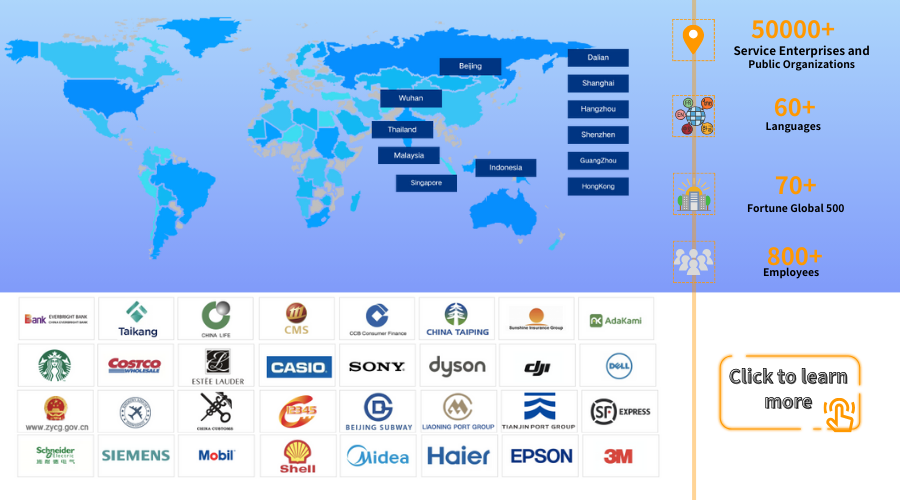Udesk Customer Service Call Center: Intelligent Customer Service in the Internet Industry
文章摘要:Against the backdrop of rapidly changing user demands and increasingly complex service scenarios in the Internet industry, traditional customer service models are facing dual challenges of efficiency bottlenecks and experience fragmentation. With its technical accumulation in the fields of AI and cloud computing, Wofeng Technology has launched an intelligent customer service call center system centered on Udesk. Through three core capabilities—omnichannel integration, intelligent interaction, and data-driven decision-making—it helps Internet enterprises build a full-lifecycle service system covering pre-sales consultation, in-sales support, and after-sales maintenance, becoming a key tool for enterprises to reduce costs, increase efficiency, and enhance user loyalty.
Table of contents for this article
- I. Omnichannel Integration: Breaking Service Silos for Seamless Reach
- 1. Unified Access to 20+ Channels, Building a Service Entry Matrix
- 2. Cross-Channel Data Integration, Creating 360° User Portraits
- 3. Intelligent Routing Allocation, Improving Service Resource Utilization
- II. Intelligent Interaction: Human-Machine Collaboration Reshaping Service Experience
- 1. AI Robot Preprocessing, Liberating Human Productivity
- 2. Intelligent Auxiliary Tools, Empowering Human Customer Service Upgrade
- 3. Video Customer Service and Remote Assistance, Breaking Physical Limitations
- III. Data-Driven: From Service Response to Business Decision-Making
- 1. Full-Scale Quality Inspection and Analysis, Building a Service Quality Closed Loop
- 2. User Behavior Insights, Driving Product Iteration and Optimization
- 3. Intelligent Decision Support, Optimizing Resource Allocation Strategies
- IV. Technical Architecture: Supporting High-Concurrency Scenarios in the Internet Industry
- 1. Elastic Cloud Deployment, Responding to Traffic Peaks
- 2. Global Acceleration, Ensuring Cross-Border Service Experience
- 3. Security and Compliance System, Safeguarding Enterprise Data Assets
- V. Conclusion
I. Omnichannel Integration: Breaking Service Silos for Seamless Reach
1. Unified Access to 20+ Channels, Building a Service Entry Matrix
2. Cross-Channel Data Integration, Creating 360° User Portraits
3. Intelligent Routing Allocation, Improving Service Resource Utilization

II. Intelligent Interaction: Human-Machine Collaboration Reshaping Service Experience
1. AI Robot Preprocessing, Liberating Human Productivity
2. Intelligent Auxiliary Tools, Empowering Human Customer Service Upgrade
3. Video Customer Service and Remote Assistance, Breaking Physical Limitations
III. Data-Driven: From Service Response to Business Decision-Making
1. Full-Scale Quality Inspection and Analysis, Building a Service Quality Closed Loop
2. User Behavior Insights, Driving Product Iteration and Optimization
3. Intelligent Decision Support, Optimizing Resource Allocation Strategies
IV. Technical Architecture: Supporting High-Concurrency Scenarios in the Internet Industry
1. Elastic Cloud Deployment, Responding to Traffic Peaks
2. Global Acceleration, Ensuring Cross-Border Service Experience
3. Security and Compliance System, Safeguarding Enterprise Data Assets
V. Conclusion
2. Cross-Channel Data Integration, Creating 360° User Portraits
3. Intelligent Routing Allocation, Improving Service Resource Utilization

II. Intelligent Interaction: Human-Machine Collaboration Reshaping Service Experience
1. AI Robot Preprocessing, Liberating Human Productivity
2. Intelligent Auxiliary Tools, Empowering Human Customer Service Upgrade
3. Video Customer Service and Remote Assistance, Breaking Physical Limitations
III. Data-Driven: From Service Response to Business Decision-Making
1. Full-Scale Quality Inspection and Analysis, Building a Service Quality Closed Loop
2. User Behavior Insights, Driving Product Iteration and Optimization
3. Intelligent Decision Support, Optimizing Resource Allocation Strategies
IV. Technical Architecture: Supporting High-Concurrency Scenarios in the Internet Industry
1. Elastic Cloud Deployment, Responding to Traffic Peaks
2. Global Acceleration, Ensuring Cross-Border Service Experience
3. Security and Compliance System, Safeguarding Enterprise Data Assets
V. Conclusion

II. Intelligent Interaction: Human-Machine Collaboration Reshaping Service Experience
1. AI Robot Preprocessing, Liberating Human Productivity
2. Intelligent Auxiliary Tools, Empowering Human Customer Service Upgrade
3. Video Customer Service and Remote Assistance, Breaking Physical Limitations
III. Data-Driven: From Service Response to Business Decision-Making
1. Full-Scale Quality Inspection and Analysis, Building a Service Quality Closed Loop
2. User Behavior Insights, Driving Product Iteration and Optimization
3. Intelligent Decision Support, Optimizing Resource Allocation Strategies
IV. Technical Architecture: Supporting High-Concurrency Scenarios in the Internet Industry
1. Elastic Cloud Deployment, Responding to Traffic Peaks
2. Global Acceleration, Ensuring Cross-Border Service Experience
3. Security and Compliance System, Safeguarding Enterprise Data Assets
V. Conclusion
2. Intelligent Auxiliary Tools, Empowering Human Customer Service Upgrade
3. Video Customer Service and Remote Assistance, Breaking Physical Limitations
III. Data-Driven: From Service Response to Business Decision-Making
1. Full-Scale Quality Inspection and Analysis, Building a Service Quality Closed Loop
2. User Behavior Insights, Driving Product Iteration and Optimization
3. Intelligent Decision Support, Optimizing Resource Allocation Strategies
IV. Technical Architecture: Supporting High-Concurrency Scenarios in the Internet Industry
1. Elastic Cloud Deployment, Responding to Traffic Peaks
2. Global Acceleration, Ensuring Cross-Border Service Experience
3. Security and Compliance System, Safeguarding Enterprise Data Assets
V. Conclusion
III. Data-Driven: From Service Response to Business Decision-Making
1. Full-Scale Quality Inspection and Analysis, Building a Service Quality Closed Loop
2. User Behavior Insights, Driving Product Iteration and Optimization
3. Intelligent Decision Support, Optimizing Resource Allocation Strategies
IV. Technical Architecture: Supporting High-Concurrency Scenarios in the Internet Industry
1. Elastic Cloud Deployment, Responding to Traffic Peaks
2. Global Acceleration, Ensuring Cross-Border Service Experience
3. Security and Compliance System, Safeguarding Enterprise Data Assets
V. Conclusion
2. User Behavior Insights, Driving Product Iteration and Optimization
3. Intelligent Decision Support, Optimizing Resource Allocation Strategies
IV. Technical Architecture: Supporting High-Concurrency Scenarios in the Internet Industry
1. Elastic Cloud Deployment, Responding to Traffic Peaks
2. Global Acceleration, Ensuring Cross-Border Service Experience
3. Security and Compliance System, Safeguarding Enterprise Data Assets
V. Conclusion
IV. Technical Architecture: Supporting High-Concurrency Scenarios in the Internet Industry
1. Elastic Cloud Deployment, Responding to Traffic Peaks
2. Global Acceleration, Ensuring Cross-Border Service Experience
3. Security and Compliance System, Safeguarding Enterprise Data Assets
V. Conclusion
2. Global Acceleration, Ensuring Cross-Border Service Experience
3. Security and Compliance System, Safeguarding Enterprise Data Assets
V. Conclusion
V. Conclusion
The article is original by Udesk, and when reprinted, the source must be indicated:https://my.udeskglobal.com/blog/udesk-customer-service-call-center-intelligent-customer-service-in-the-internet-industry.html
Advantages of Cloud-Based DeploymentCloud Telephony SystemCloud-Based Call Center Suite

 Customer Service& Support Blog
Customer Service& Support Blog


